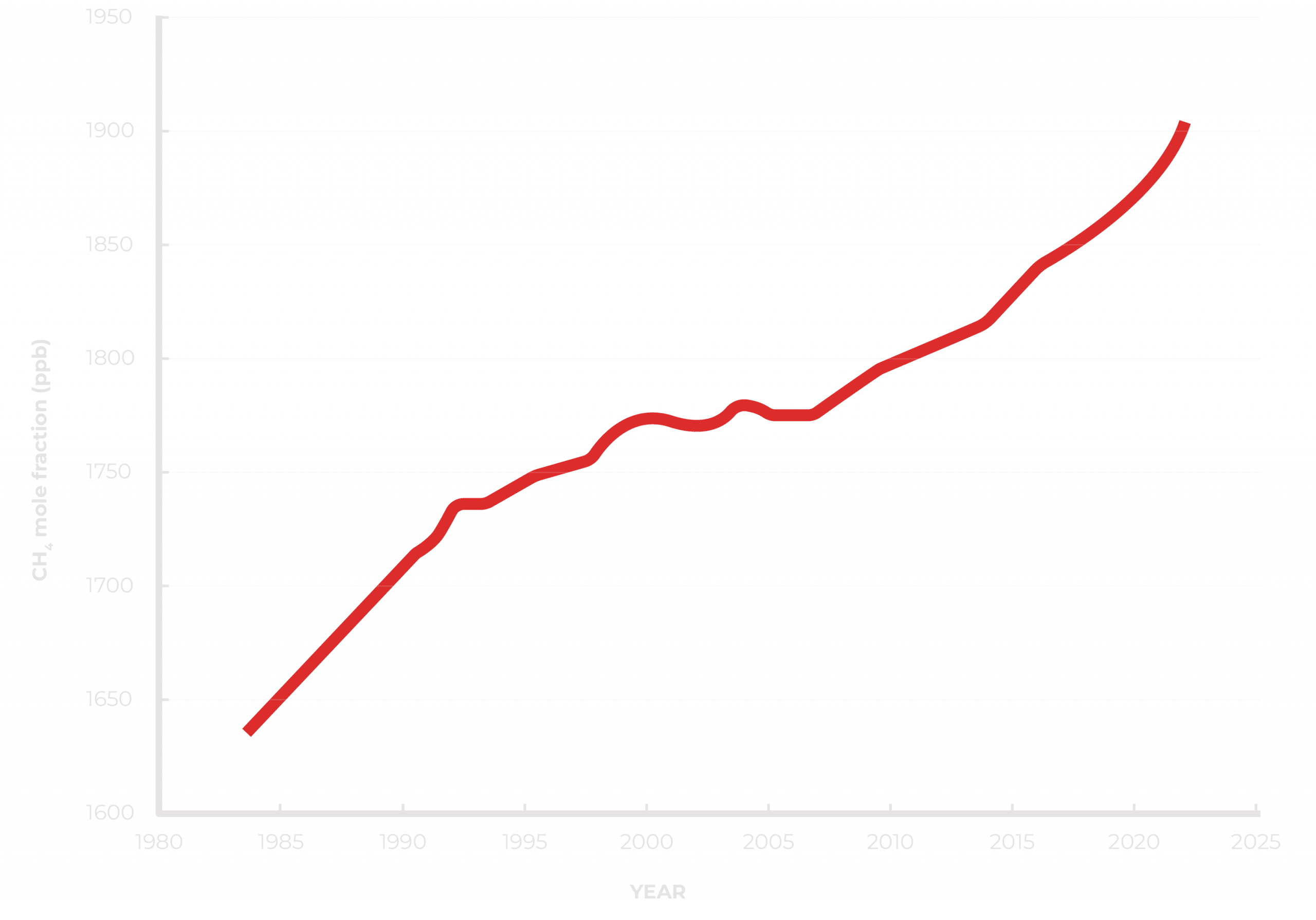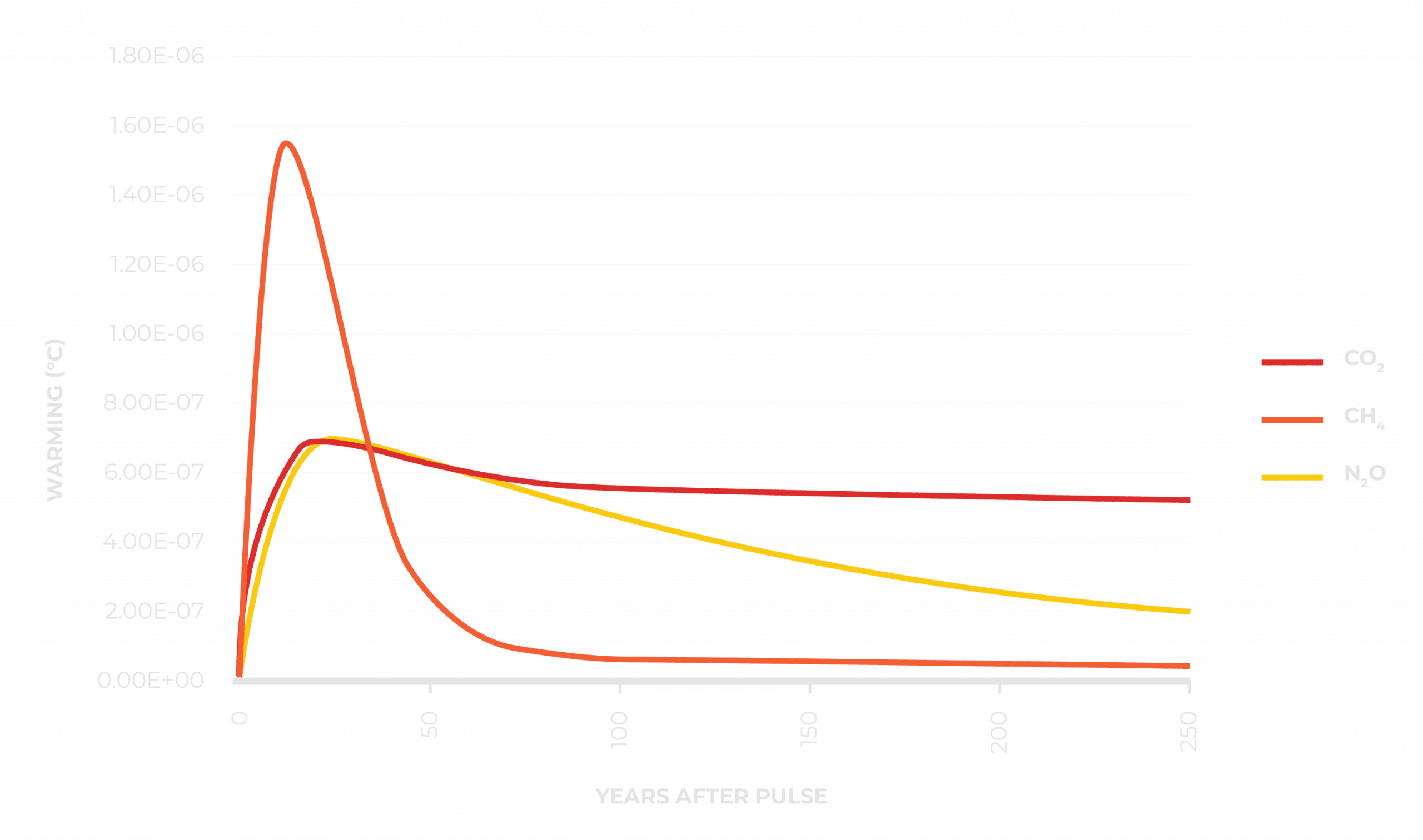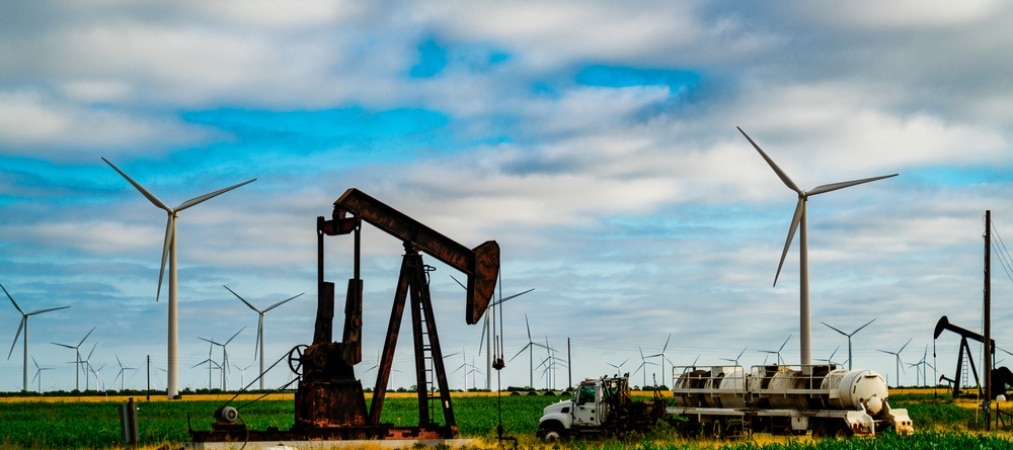Methane is a short-lived but potent greenhouse gas which is the second largest contributor to global warming after CO2. It is estimated to account for 30% of human-induced warming since the pre-industrial era (1). Because methane is on average 80 times more powerful a greenhouse gas (GHG) than CO2 over a 20-year period, it offers a quick and impactful way to mitigate short-term global warming. This is key to limiting the risk of crossing irreversible climate tipping points in coming decades. Furthermore, as methane’s climate impact is focused over short-term and currently minimized by standard GHG accounting in CO2e, we recommend companies and financial institutions set separate and specific targets for reducing both their CO2 and methane emissions.
Warming due to anthropogenic methane emissions
Methane has contributed 30% of global warming since the pre-industrial era
Methane (CH4) is a naturally occurring molecule, and has fossil and biogenic sources. Fossil methane is the main component of fossil gas and is found in underground deposits, while biogenic methane is naturally emitted by chemical reactions taking place in various living organisms including cattle and ants, in decaying biomass and garbage, and in wetlands and water reservoirs. Over the last century, however, methane atmospheric concentration has doubled and is still growing, pulled up by human activities. (2) Recent studies suggest they represent 50% to 63% of global annual methane emissions, or around 372 Mt out of 587 Mt to 742 Mt. (3) As a result, methane has contributed 30% of global warming since the pre-industrial era according to United Nations Environment Program (UNEP) estimates. (4)
CH4 trend: Globally-averaged atmospheric methane abundance determined from marine surface sites since 1983, from NOAA Global Monaitoring Laboratory. (5)

Agriculture, fossil fuels and waste are the leading sources of human-induced methane emissions.
- Agriculture is a major contributor mainly because of livestock emissions from manure and enteric fermentation, and rice cultivation (147 Mt/year),
- Emissions from the fossil fuels sector originate from the whole oil and gas value chain (78 Mt/year) and coal mining (41 Mt/year),
- Waste emissions come from decomposition of solid waste and wastewater (73 Mt/year). (6)
Average annual anthropogenic methane emissions per source, based on studies of methane emissions in years 2019 and 2020. (7)

Methane emissions: a hammer blow for warming mitigation
Methane is a much more powerful (8) greenhouse gas than CO2: if 1 ton of methane is released in the atmosphere, it will capture substantially much more solar energy over a given period of time (9) than 1 ton of CO2. However, methane has a short atmospheric lifetime: while a molecule of CO2 may persist in the atmosphere for many centuries, methane breaks down after around 12 years. (10)
Warming characteristics are represented on the graphic below:
- methane, which has a strong but short-term effect, causes a short-term increase of temperature,
- CO2, which has a lesser effect but keeps active on a longer term, builds up a long term increase of temperature.
Global warming response to emission of 1 MtCO2e (using 100-year GWPs) of CO2, methane (CH4) and nitrous oxide (N2O). (11)

These characteristics of methane molecules — a high heat trapping capacity over a short period — mean that, if compared to CO2 over a long timeframe, its effect will seem lesser than if compared over a short timeframe, as it will quickly stop warming the atmosphere while CO2 will keep active. Consequently, accounting of greenhouse gas emissions in CO2e using 100-years Global Warming Potentials has been inadequate for showing the methane impact on climate in key decades to 2050, which has led to lack of action to mitigate its emissions.
Methane mitigation to avoid triggering cascading environmental effects
A release of methane in 2030 causing a 1°C warming in 2050 would lead only to a less than 0.2°C warming by 2100. (12) But if methane-induced warming quickly reduces over a 100-years horizon, it does not mean the climate system will get back to its initial setting. On the contrary, there is a material risk of crossing “tipping points”: warming thresholds above which climate elements will abruptly and irreversibly change, in ways that will harm ecosystems and may even amplify global warming. (13) Key tipping risks include the collapse of the West Antarctic and Greenland ice sheets, the melting of the Arctic Permafrost – which may lead to reduced albedo (surface reflectivity) and to the release of GHGs currently locked in frozen soils – as well as the collapse of the Atlantic Meridional Overturning Circulation ocean current and the dieback of the Amazon forest, Earth’s lung.
In its Climate Tipping Points report, (14) the OECD states that “recent state-of-the-art research shows that important tipping points are already “possible” at current levels of warming and may become “likely” within the Paris Agreement range of 1.5 to 2 °C warming”: this means “it is vital to limit the global temperature increase to 1.5°C, with no or very limited overshoot.”
Target setting to tackle both methane and CO2 impacts
In order to limit global warming to 1.5°C over both long- and short-terms, emitting companies and financial institution need to set specific reporting and reduction target on simultaneously:
- CO2e emissions, which is key to mitigating long-term climate change, and
- methane emissions, which is key to minimize overshoot of the 1.5°C target on short- to medium- term, and to avoid crossing tipping points that could further unsettle the climate.
The adoption of decarbonization targets and reporting of emissions using the CO2e metric – as commonly done by financial institutions and required by the guidelines of net-zero initiatives like the Net-Zero Banking Alliance – understates the impact of methane in the period over which these targets are set, typically between 2020 and 2050. It therefore dissuades financial institutions from taking adequate action on methane and makes it impossible for outside observers to evaluate how much of any CO2e reduction comes from progress at cutting different gasses. It’s critical that financial institutions set separate targets and report emissions separately for CO2e and individual GHGs – one of the recommendations of the UN High-Level Expert Group on net zero (15) – , to minimize the risk of both overshooting the 1.5°C target on short- to medium- term and crossing climate tipping points.



